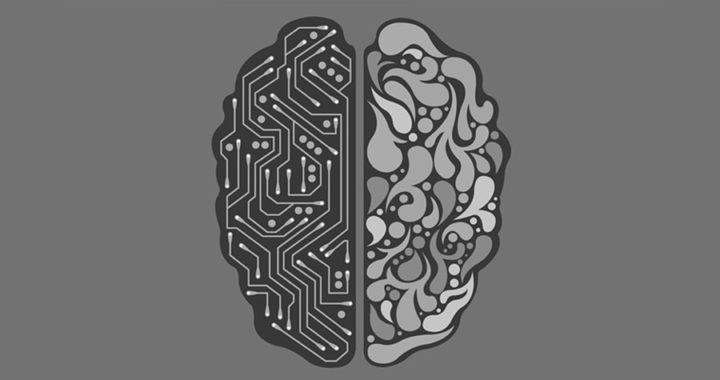Machine learning is arguably a buzzword that earned widespread use beginning in 2016. More than just a fashionable terminology, however, it is a legitimate subfield of computer science that was first conceptualized in 1959. It also borrows tools and techniques from data science, as well as principles and practices in statistics.
Central to this technology is the development and use of algorithms and models that can be embedded into a software or a computer machine to automatically process large amount of data, understand patterns, and provide corresponding predictions or interferences. Machine learning has since become one of the main goals and fields of artificial intelligence.
What is Machine Learning?
Arthur Lee Samuel, a pioneer in computer gaming and artificial intelligence, was the first to coin the term “machine learning” in 1959 while he was working as a computer scientist for IBM. He defined this concept as giving “computers the ability to learn without being explicitly programmed.”
Computer scientist and university professor Tom M. Mitchell provided a more formal description of machine learning that centered on defining the actual application of algorithms in computer programming. In his 1997 book “Machine Learning,” he said:
“A computer program is said to learn from experience ‘E’ with respect to some class of tasks ‘T’ and performance measure ‘P’ if its performance at tasks in T, as measured by P, improves with experience E.”
Take note that Mitchell also described machine learning as the study of computer algorithms that can automatically improve through experience or more appropriately, through constant exposure to data with minimal to zero human involvement.
From the aforementioned definitions and descriptions from Samuel and Mitchell, machine learning corresponds to a different approach to computer programing. Note that programming or coding corresponds to the process of codifying and embedding human knowledge and procedures into a form that machine can understand and execute.
Machine learning takes a different approach to programming because it involves the development and use of computer algorithms that can process and analyze Big Data and learn from the outcome without being explicitly programmed.
How Can Machine Learn Using Algorithms?
There are three broad categories that define the operational scope and function of machine learning. These are supervised learning, unsupervised learning, and reinforcement learning.
Take note the following ML approaches:
• Supervised learning: Supervised learning involves the use of machine learning algorithms that require the introduction of and exposure to human inputs and desired outputs, in addition to feedback. This essentially means training the algorithms using a predetermined set of training examples to facilitate the accuracy of conclusion when exposed to new data.
• Unsupervised learning: Unsupervised learning does not involve the use of desired outputs. Instead, the algorithms are on their own to explore the structure of a particular input to determine patterns and relationships needed to arrive at conclusions
• Reinforcement learning: Reinforcement learning involves allowing the algorithms to interact with the formulated environment to generate feedback that takes the form of rewards and punishment, thus enabling them to learn from experience. Note that this not involves the use of correct inputs or desired outputs as opposed to supervised learning.
What are the Applications of Machine Learning?
Machine learning has notable benefits or advantages. These correspond to applications that center on the effective and innovative use of big data. This subfield of computer science and data science has seen applications across different fields of disciplines, as well as across different industries and sectors.
Take note of the following applications:
• Online Advertising: Platforms such as Google AdWords from Google and Facebook use machine learning to accurately deliver ads to targeted Internet users using data obtained from their browsing history and online behavior.
• Search Engine: Google has been using algorithms to automatically categorize and rank websites based on a set of metrics to include contextual data from website contents and search engine optimization practices.
• Content Delivery: Similar with online advertising and search engine, personalized online content delivery depends on machine learning to process and analyze historical data and online behaviors. This is exemplified in Facebook Newsfeed, online shopping websites such as Amazon, and booking and accommodation services such as Airbnb.
• Virtual Assistant: Apps such as Siri from Apple, Google Now, and Bixby from Samsung use machine learning to personalize the delivery of personal assistance. Machine learning also improves the speech recognition capabilities of these applications.
• Language Processing: Natural language processing or NLP is one of the main fields and goals of artificial intelligence. Its advantages center on leveraging language models for numerous applications such as text and speech recognition, translating languages, and data generation and content creation through generative artificial intelligence, among others.
• Automated Driving: Prototype vehicles that are capable of automated driving use this technology to learn from historical data and additional input data from the surrounding, thus allowing it to navigate through streets with minimal to zero direct human intervention.
• Crime Detection: Data analytics providers have serviced banks and retailers, among others to lessen security risks by detecting fraud. Machine learning uses historical data to look for patterns that characterize fraudulent behaviors. Law enforcement agencies have also used this technology to understand crime patterns within a certain area.
Deep learning is a subfield of machine learning that models and solves complicated problems using artificial neural networks. It is dubbed “deep” because these neural networks contain several hidden layers. This gives it advantages over models based on shallow networks that have one or two hidden layers. Deep learning models are trained via exposure to vast quantities of data and modifying the weights of the neurons in the network to reduce prediction errors.
